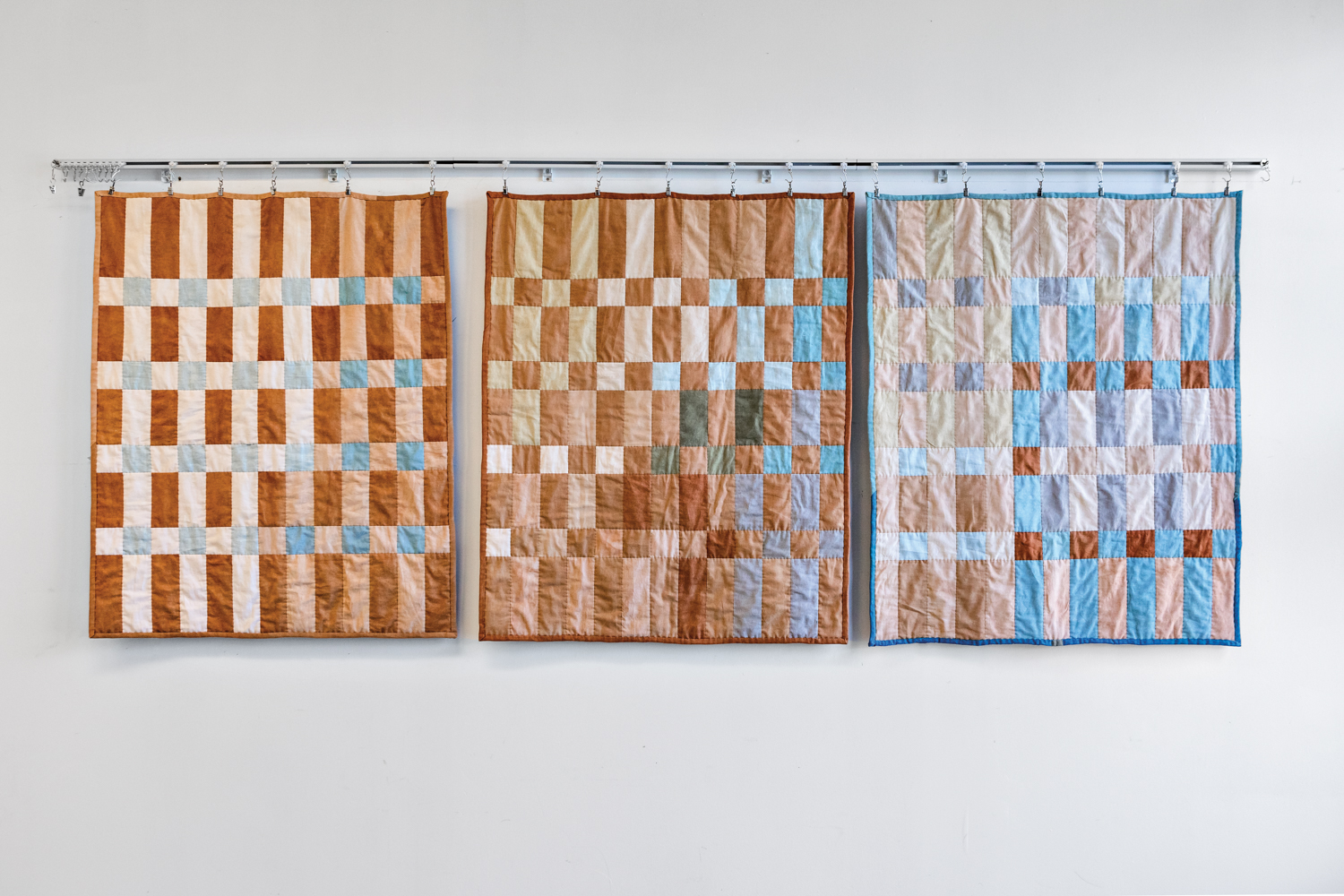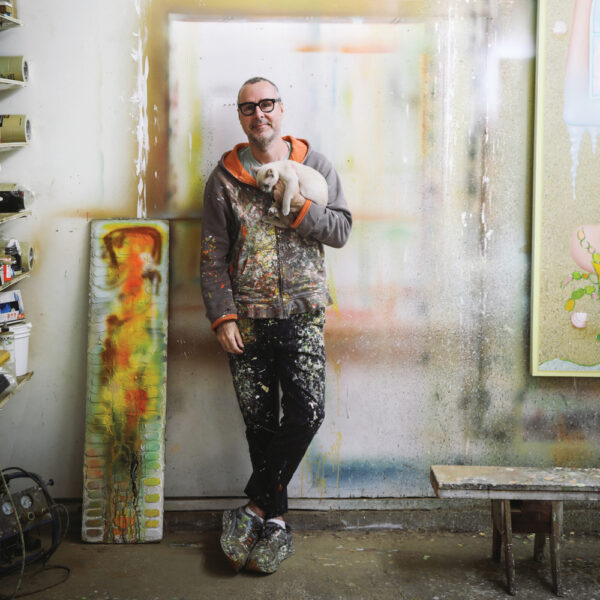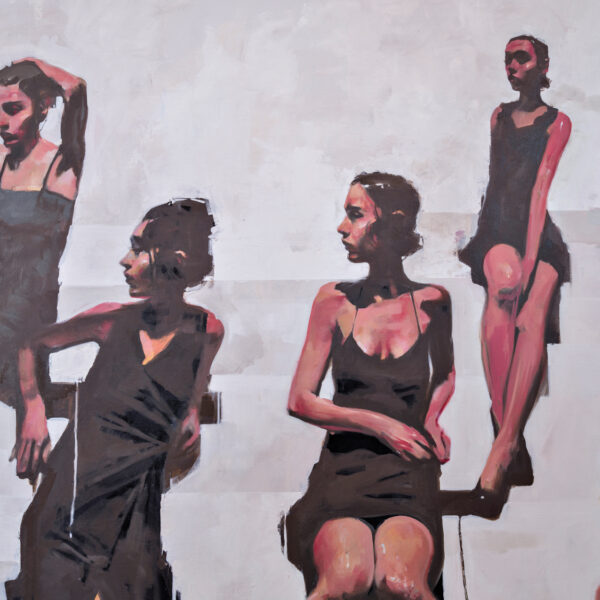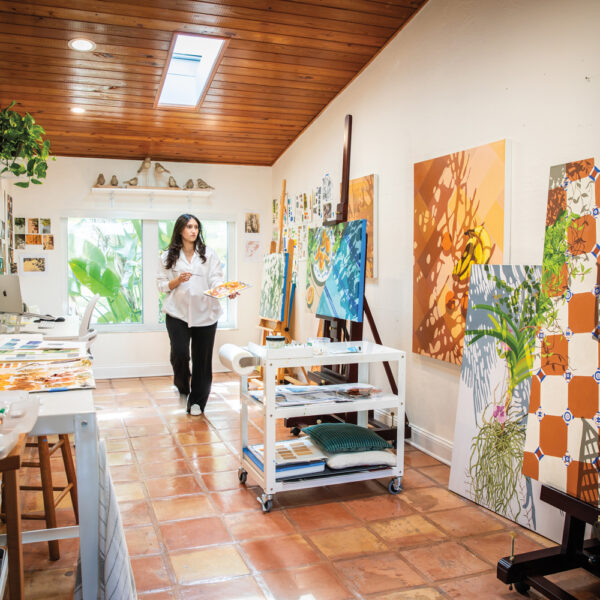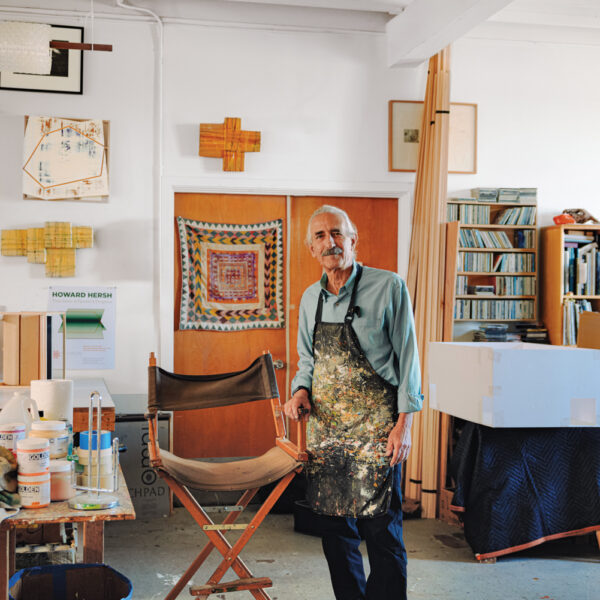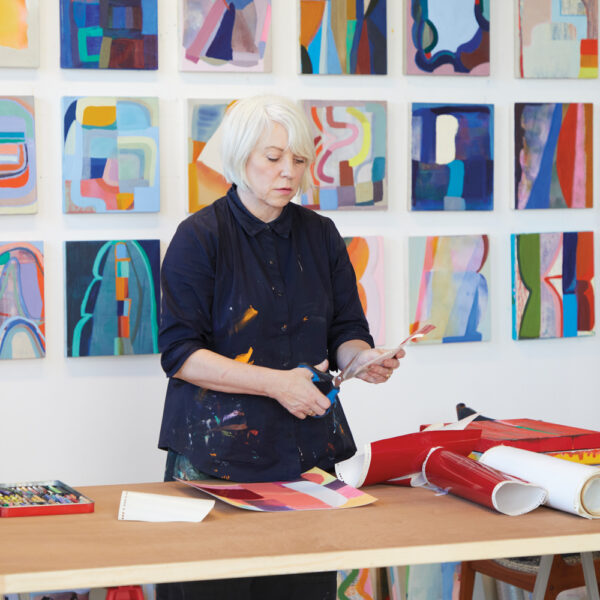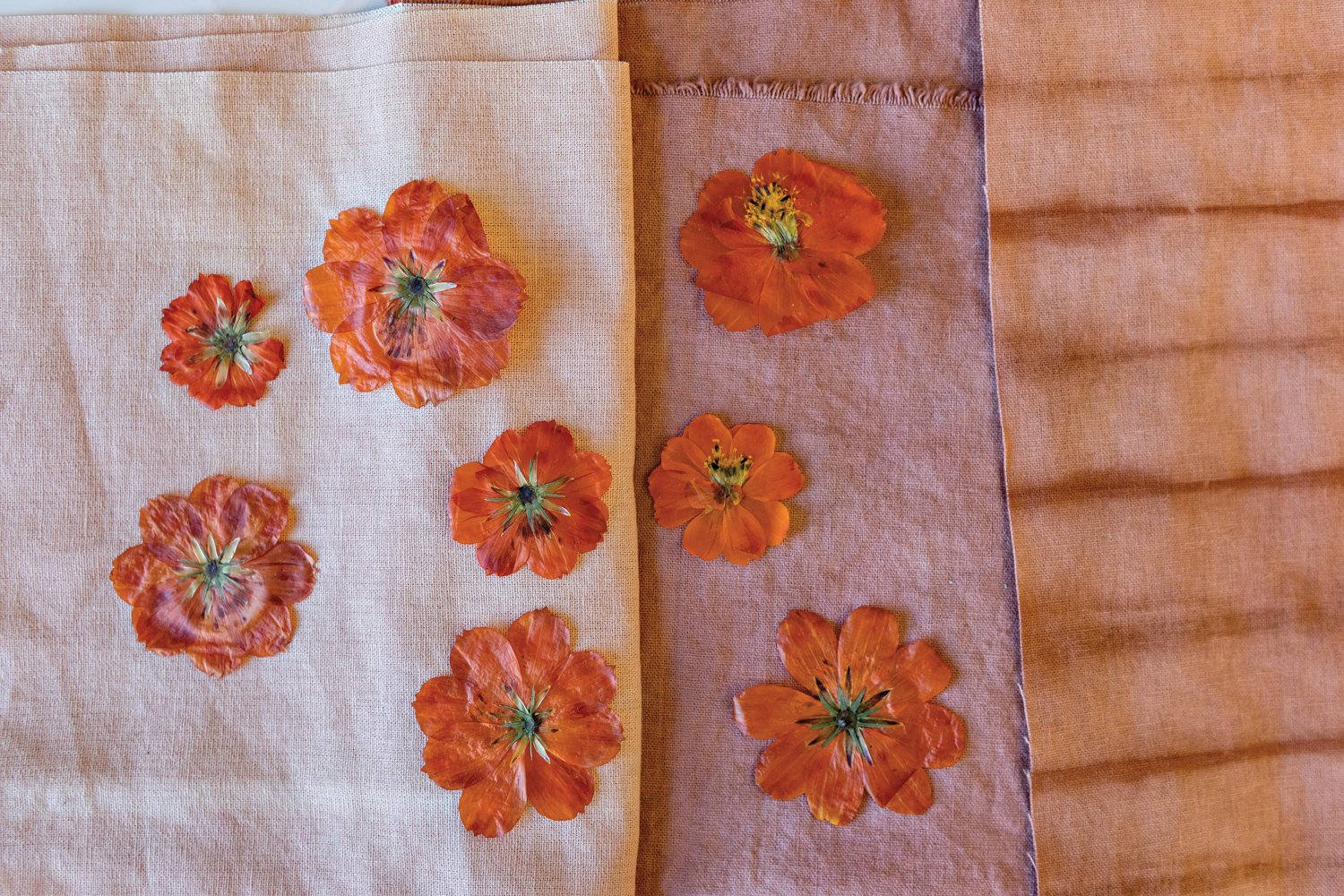
From her Hudson Valley home, quilter and textile designer Alison Charli Smith can watch the colors of Mount Beacon as they shift with the seasons. “When it’s springtime, there are these little pops of chartreuse that show up on the hillside before the more vibrant green starts to fill in,” she reflects. The colors that distinguish Smith’s quilts are often directly inspired by these transitional hues, which can be spotted just outside her windows or during a trail run. As an artist working exclusively with natural dyes and fabrics, it’s only fitting that she takes her cues from the wild beauty of her surrounding environment.
Smith has been sewing all her life, but when she discovered natural dyes at a workshop in her 20s, she was hooked. Sourced from materials like madder root, which creates a deep red color, or Osage orange, which produces rich shades of yellow, this new medium allowed her to endlessly explore and experiment. “I was dyeing fabric after fabric. Eventually, I was like, ‘What am I going to do with all this?’ And so, I started making quilts.”
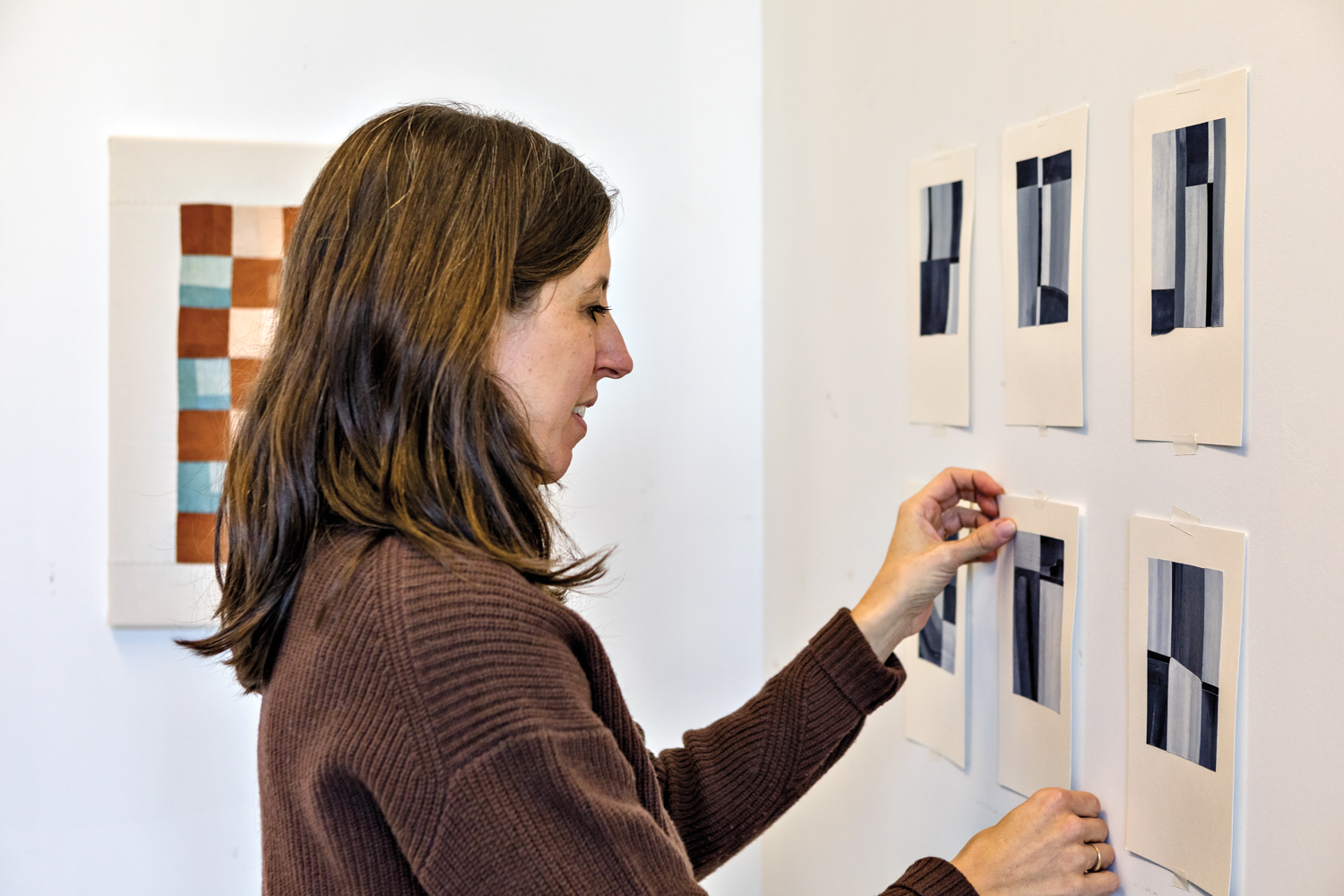
The artist with a series of indigo collages.

The artist with a series of indigo collages.
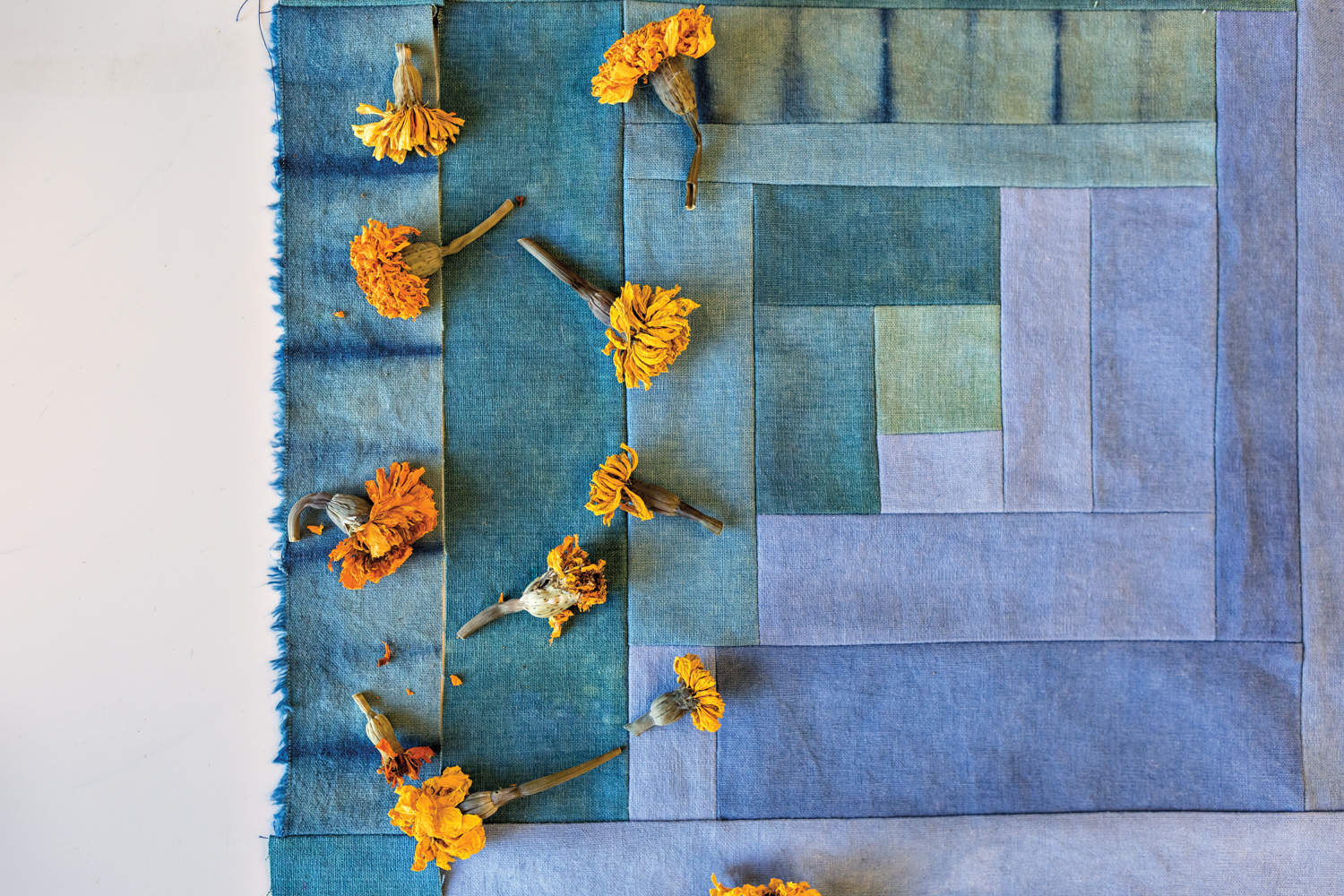
Marigolds grown in the artist's garden.

Marigolds grown in the artist's garden.
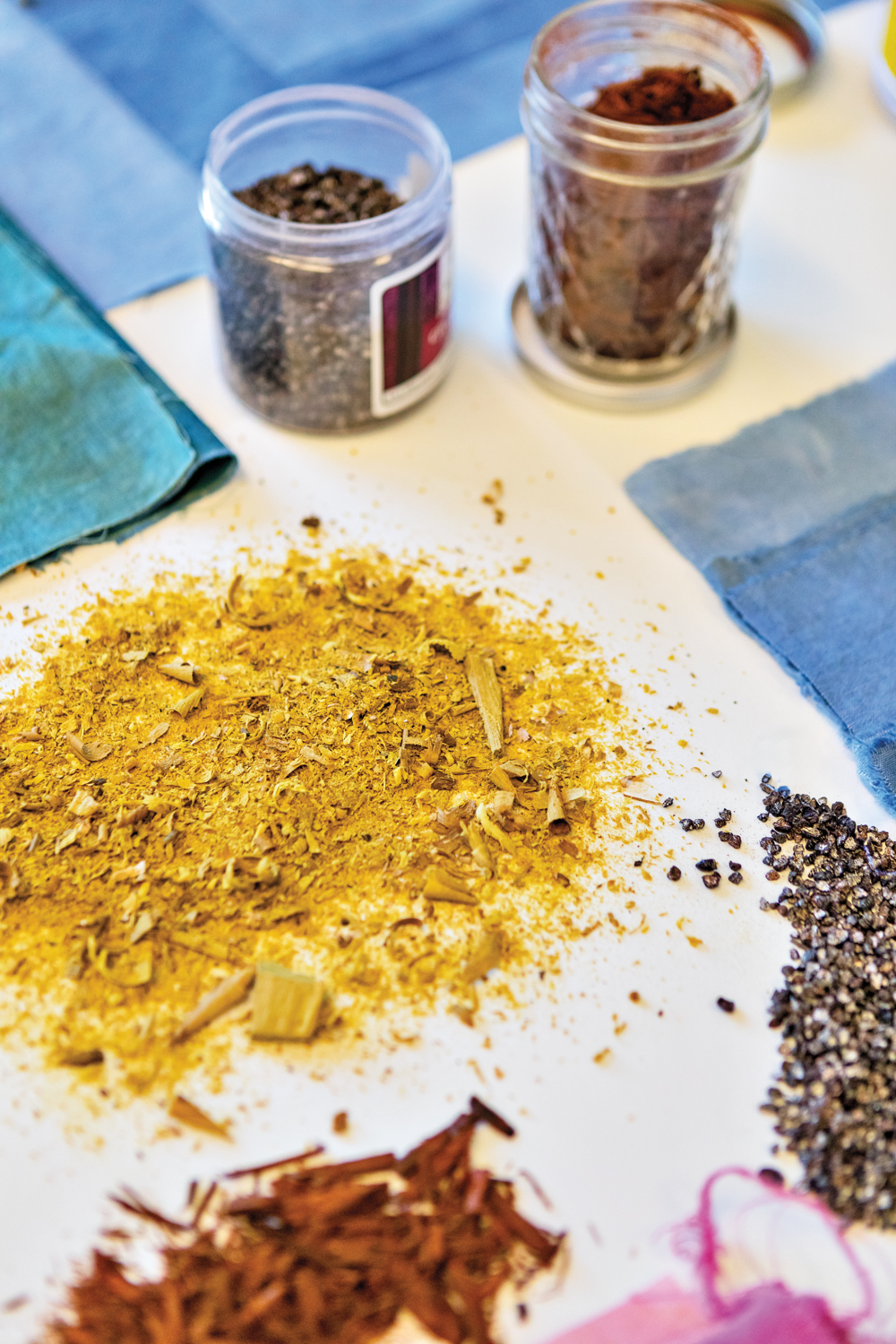
Dye made from Osage orange.

Dye made from Osage orange.
Further distinguishing Smith’s work, the lineage of the textiles can often be traced back to events from her own life. For instance, she repurposed the table linens that she hand-dyed for her wedding by incorporating them into several different quilts. “I tend to remember my fabrics—where I dyed them, where they came from,” she explains. “They have a history.”
While she often uses traditional quilting patterns, the final product is a one-of-a-kind work that, due to the unpredictable nature of her dyes, can still amaze the artist herself. “You have to have an openness to deviating from the original plan,” Smith shares. “When you’re working with plants and living things, there’s still room for surprises.”

